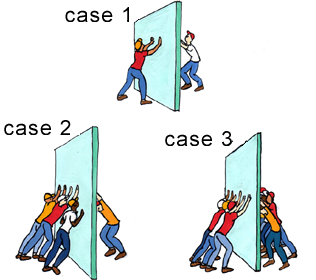 | ||
| || home ||| units ||||| help | ||
| All Units | > | Unit 11 - Air pressure | > | Investigation 1 - Exploring air pressure | > | Trial 2 |
Trial 2 - Air Pressure in a Juice Box
-
Measure the air pressure in the room. Refer to Technical Hints to connect the gas pressure sensor. Refer to Technical Hints to record a single measurement.

-
Without inhaling or exhaling with the straw, use your experimental setup to measure the air pressure inside the juice box.

-
Add your measurements to the drawing below. Refer to Technical Hints to use the drawing tool.

-
Is the air pressure in and outside the juice box the same?

-
Does it matter where outside the juice box you measure the air pressure?

-
Measure the air pressure in the juice box as you suck air out of the juice box. Show your results in the form of a graph. Refer to Technical Hints to record a series of measurements.

-
Label the graph when you started to inhale and when you stopped inhaling. Refer to Technical Hints to label a graph.
-
When the pressure inside the juice box is at its lowest point, what does the box look like? Make a drawing showing the box, the inside air pressure and the outside air pressure. Refer to Technical Hints to use the drawing tool.

-
What happens to the air pressure in the juice box when you stop inhaling?
Nothing. It keeps going lower. It returns to the same as the outside air pressure.
-
Try exhaling into the straw. How does this affect the shape of the juice box?

-
What happens to the air pressure in the juice box when you stop exhaling?
Nothing. It keeps going higher. It returns to the same as the outside air pressure.
-
On any given surface, air pressure exerts a force. This force acts like a push. Look at the cases below. If the wall is not sturdy, which way would you expect it to go?

Case 1
right left neither Case 2
right left neither Case 3
right left neither
-
Looking at the cases above, which case most closely matches the data you gathered in Trial 2 when you were sucking air out of the juice box?
Case 1 Case 2 Case 3 Explain.

-
Which case most closely resembles when you were neither sucking on nor blowing into the straw -- when you were just measuring the inside and outside air pressure?
Case 1 Case 2 Case 3 Explain.

 |  |  |
Copyright 2005 The Concord Consortium, All rights reserved.